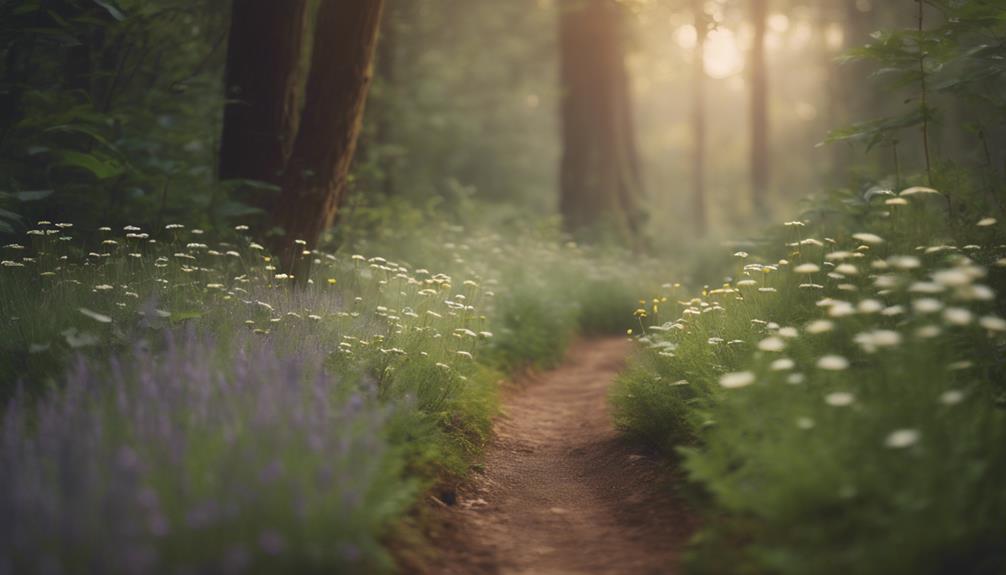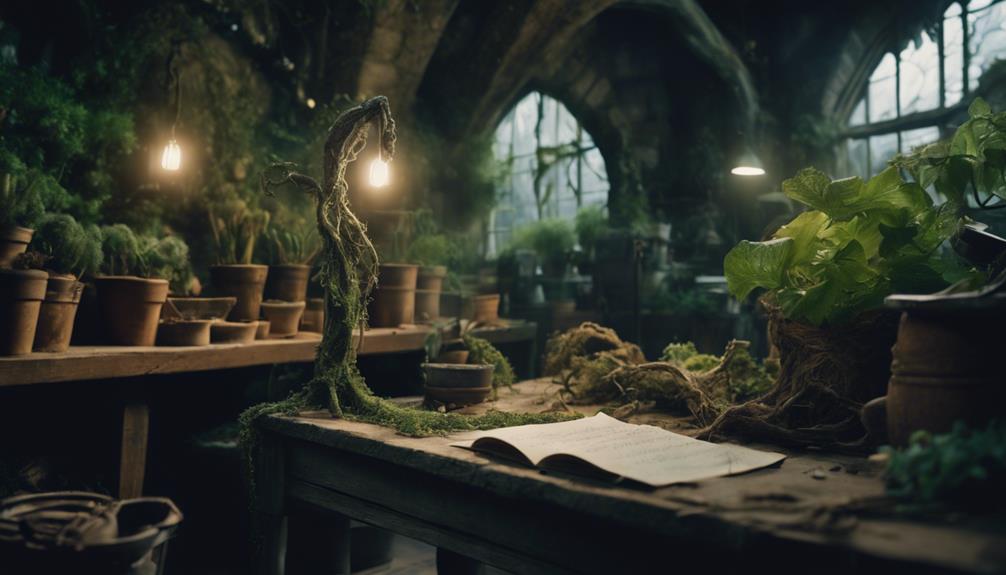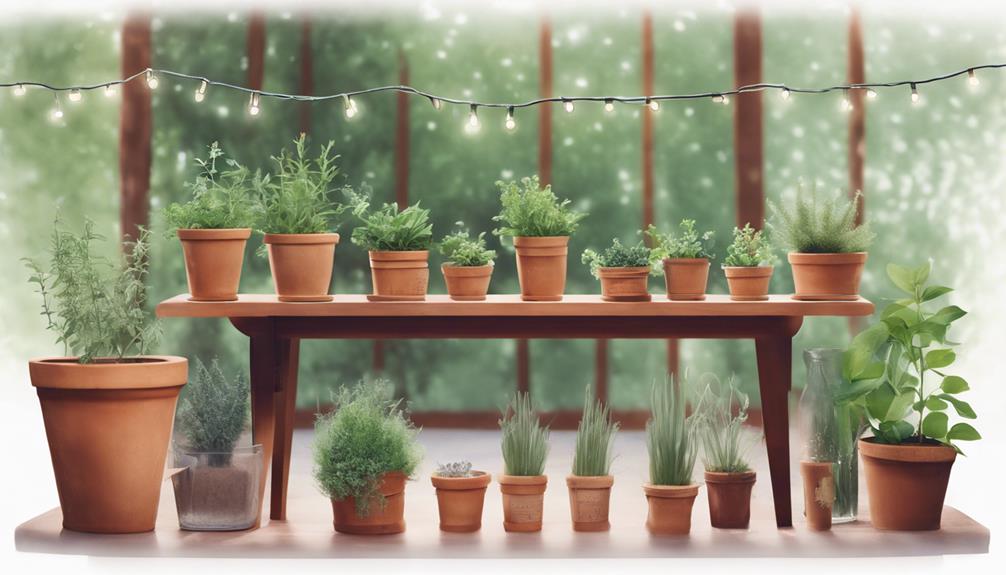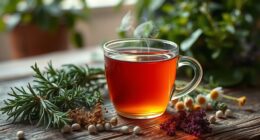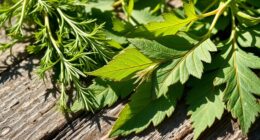Herbology, a fusion of botany and medicine, combines ancient wisdom with modern science to revolutionize healthcare and wellness. With roots in traditional Chinese, Indian, and Egyptian practices, herbology has evolved to integrate traditional knowledge with evidence-based practices. Today, herbal medicine complements conventional treatments, playing an essential role in preventive healthcare. As the demand for natural alternatives grows, herbology is poised to play a significant role in holistic wellness. By exploring the intersection of botany and medicine, we can uncover the vast potential of herbology to transform healthcare and discover innovative solutions for a healthier tomorrow.
Key Takeaways
• Herbology's ancient roots in China, Egypt, and India shape modern practices, emphasizing the importance of understanding traditional knowledge.
• Integrating herbal medicine with conventional treatments enhances patient care, offering a holistic approach to healthcare.
• Sustainable practices, ethical considerations, and fair trade are crucial in herbology to ensure long-term viability of medicinal plant resources.
• Herbologists require diverse skills, including plant identification, chemical properties, and continuous education to stay updated in the field.
• The fusion of traditional knowledge with modern science drives innovation in herbology, improving patient outcomes and preserving medicinal plant species.
Unraveling the Roots of Herbology
Throughout history, ancient civilizations in China, Egypt, and India have laid the foundations of herbology, weaving together threads of botany, traditional medicine, and spirituality to create a rich tapestry of knowledge.
The roots of herbology are deeply embedded in these ancient cultures, where plants were revered for their medicinal properties and spiritual significance. In traditional Chinese medicine, herbal remedies were used to balance the body's energy, or 'qi.' Similarly, in Ayurvedic medicine, plants were used to promote health and wellness.
These ancient traditions have shaped the modern practice of herbology, which continues to evolve and adapt to new discoveries and advancements in science and medicine. Understanding the roots of herbology provides a solid foundation for exploring its applications, ethics, and future developments.
Herbal Medicine in Modern Healthcare

As the modern healthcare landscape continues to shift towards a more holistic approach, herbal medicine is emerging as a natural complement to conventional treatments, offering a unique opportunity to integrate traditional knowledge with evidence-based practices.
This fusion enables healthcare providers to tap into the therapeutic potential of herbal remedies, enhancing patient care and outcomes. Turmeric, peppermint, and valerian root are examples of herbs finding applications in various medical fields.
Integrative medicine combines traditional and evidence-based practices, highlighting the significant role of herbal medicine in preventive healthcare. As the demand for natural alternatives grows, herbal medicine is poised to play an increasingly important role in modern healthcare, offering a promising solution for those seeking holistic wellness.
Ethics and Sustainability in Practice
Responsible herbologists acknowledge the necessity of adopting sustainable harvesting methods and ethical practices to guarantee the long-term viability of medicinal plant resources. This includes avoiding overharvesting, protecting endangered species, and promoting fair trade practices. Moreover, ethical considerations involve respecting traditional knowledge and intellectual property rights of indigenous communities.
| Sustainable Practices | Ethical Considerations |
|---|---|
| Wildcrafting with minimal impact | Respecting traditional knowledge |
| Cultivating endangered species | Fair trade practices |
| Avoiding overharvesting | Protecting indigenous intellectual property |
Pursuing a Career in Herbology
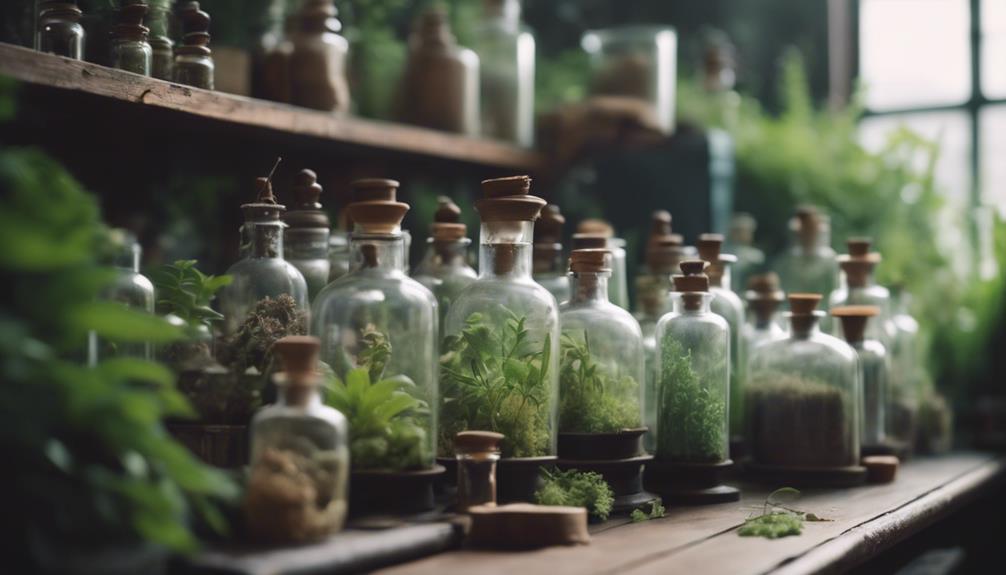
Beyond the importance of sustainable practices and ethical considerations in herbology lies a vast array of career opportunities for those passionate about the field. Herbology offers diverse career paths, from working in health food stores to entrepreneurial ventures.
Educational avenues include undergraduate degrees in botany or specialized herbology programs, which equip students with essential skills such as plant identification and understanding chemical properties. Continuing education through workshops and certifications is essential for staying updated on the latest research and developments.
The Evolving Landscape of Herbology
The dynamic interplay between ancient wisdom and modern scientific inquiry has propelled herbology into a sophisticated field that seamlessly merges diverse disciplines. This fusion has led to a profound impact on the practice, driving innovation and growth.
| Area of Focus | Key Developments | Impact |
|---|---|---|
| Research and Education | Integration of traditional knowledge with modern science | Enhanced understanding of herbal medicine |
| Clinical Applications | Development of evidence-based herbal remedies | Improved patient outcomes |
| Sustainability | Adoption of responsible harvesting and cultivation practices | Preservation of medicinal plant species |
| Global Collaboration | Cross-cultural exchange of herbal medicine practices | Enriched understanding of regional herbal traditions |
| Digital Innovation | Development of digital platforms for herbal education | Increased accessibility to herbal knowledge |
As herbology continues to evolve, its landscape is reshaped by the convergence of ancient wisdom and modern scientific inquiry, paving the way for a brighter future in herbal medicine.
Frequently Asked Questions
How Do I Ensure the Authenticity of Herbal Products and Supplements?
To guarantee the authenticity of herbal products and supplements, look for third-party certifications like NSF International or ConsumerLab.com. Check the label for clear ingredient listing, dosage, and manufacturer information. Be wary of exaggerated claims and unrealistic promises. Research the company's reputation, and opt for products with transparent sourcing and manufacturing processes.
Additionally, consult with a healthcare professional or registered dietitian to make sure the product is safe and suitable for your needs.
Can Herbal Medicine Be Used in Conjunction With Pharmaceuticals Safely?
When contemplating the concurrent use of herbal medicine and pharmaceuticals, it is important to exercise caution. Herbal supplements can interact with prescription medications, potentially amplifying or reducing their effects.
Possible interactions may involve changed metabolism, heightened risk of bleeding, or decreased efficacy. To guarantee safe co-administration, patients should consult with a healthcare professional to discuss possible interactions and adjust dosages accordingly.
What Are the Potential Interactions Between Herbal Remedies and Prescription Drugs?
Interactions between herbal remedies and prescription drugs can be complex and potentially hazardous. Herbal compounds can alter drug metabolism, leading to increased or decreased efficacy, or even toxicity.
For instance, St. John's Wort can reduce blood levels of certain medications, while garlic supplements can increase the risk of bleeding when taken with anticoagulants.
It is essential for healthcare providers to take into account these potential interactions when prescribing medications to patients using herbal remedies.
Are There Any Standardized Dosing Guidelines for Herbal Remedies?
Standardized dosing guidelines for herbal remedies are limited, as the industry is largely unregulated. However, some governing bodies, such as the World Health Organization, have established guidelines for certain herbal medicines. Additionally, some manufacturers provide recommended dosages on product labels.
However, variations in product quality, herbal extracts, and individual responses to herbal remedies make it challenging to establish universal dosing standards.
How Does Herbology Address Cultural Appropriation of Traditional Knowledge?
'When in Rome, do as the Romans do' is an adage that resonates with herbology's approach to cultural appropriation.
Herbology acknowledges the importance of respecting traditional knowledge holders' rights and interests. Responsible herbologists guarantee that indigenous communities benefit from the use of their knowledge, and that their intellectual property rights are protected.
This is achieved through equitable partnerships, fair compensation, and co-authorship in research and product development.
Conclusion
As the boundaries of herbology continue to expand, the pursuit of evidence-based knowledge and sustainable practices remains paramount.
The future of this ancient practice hinges on its ability to adapt to modern challenges, harnessing innovation while honoring its rich cultural heritage.
As the world turns to nature for solutions, herbology stands poised to revolutionize healthcare, illuminating the path to a healthier, more sustainable future.


